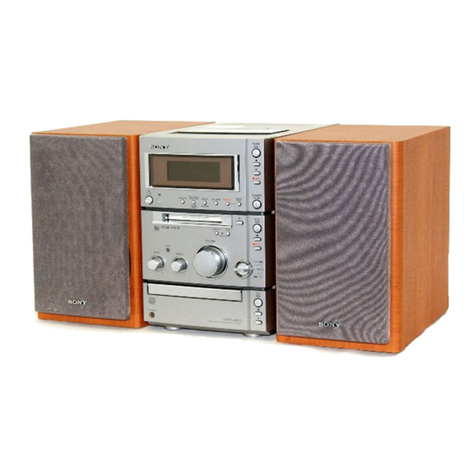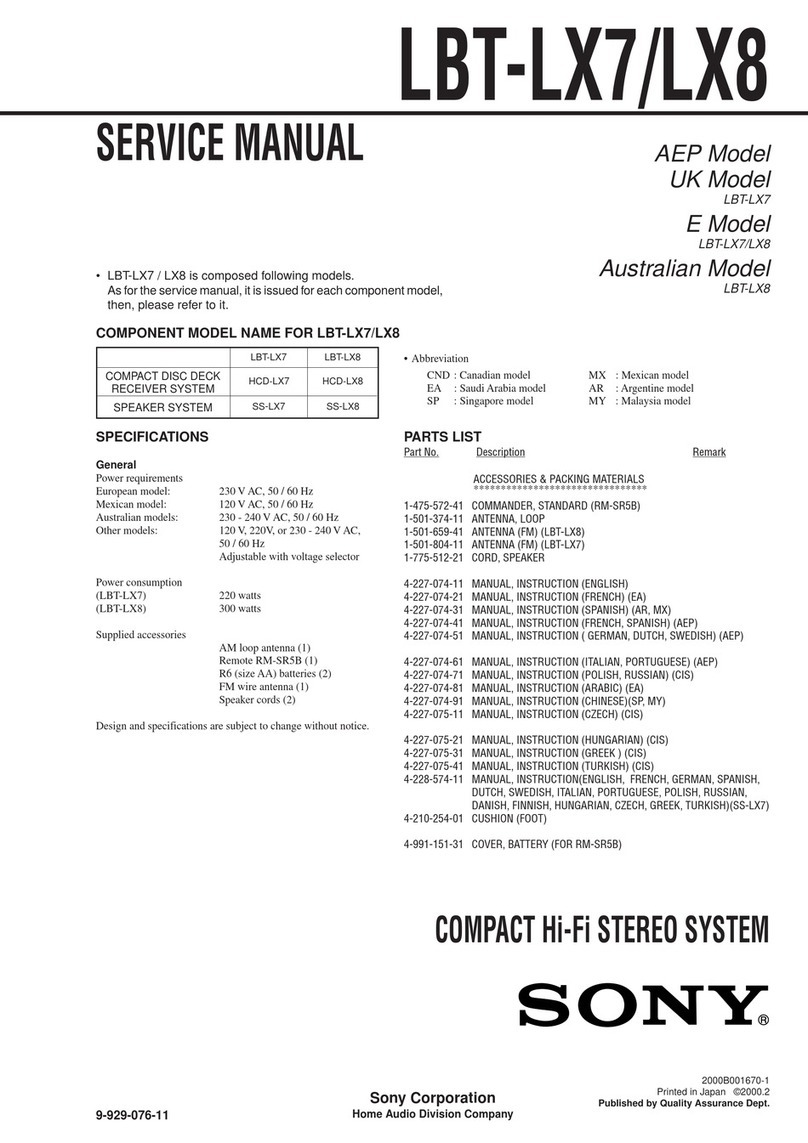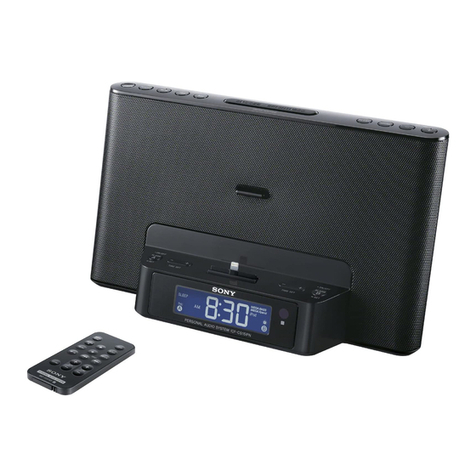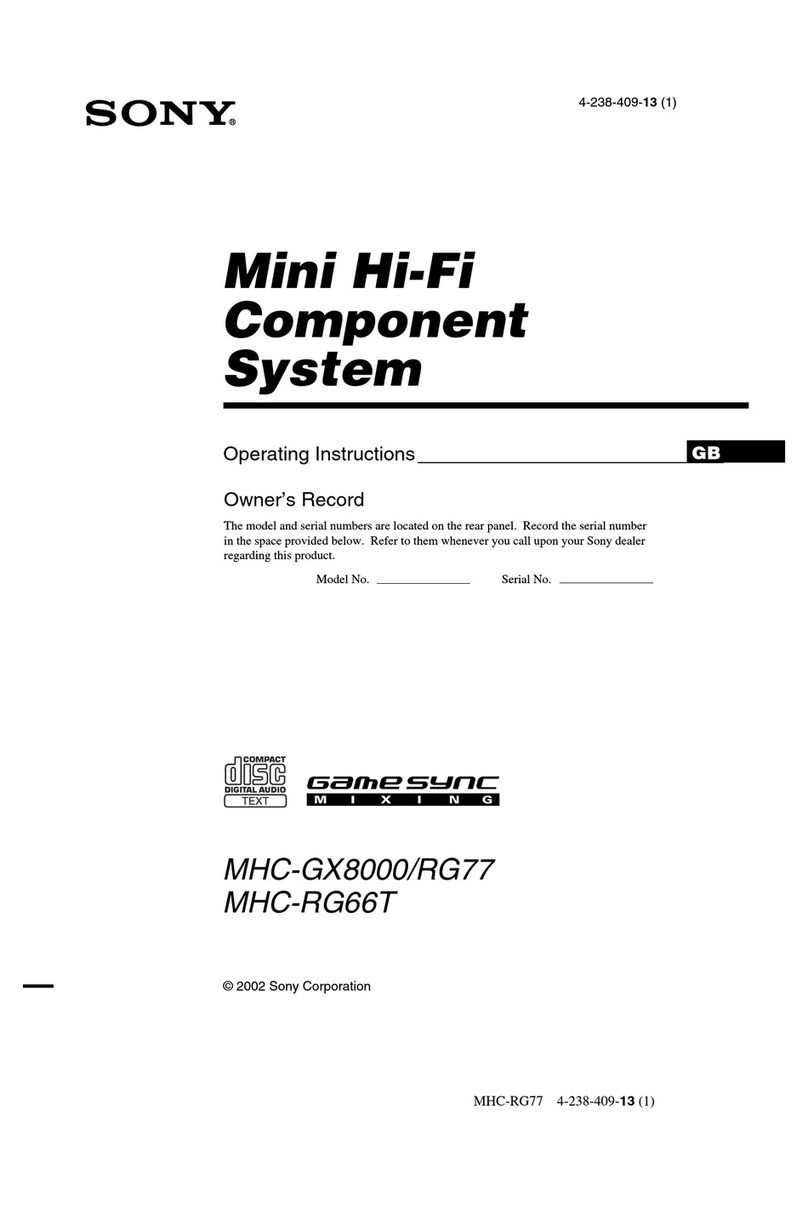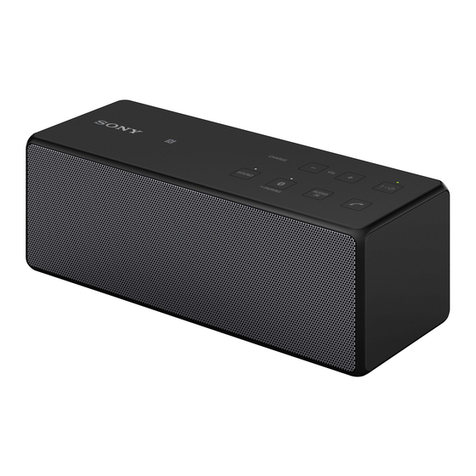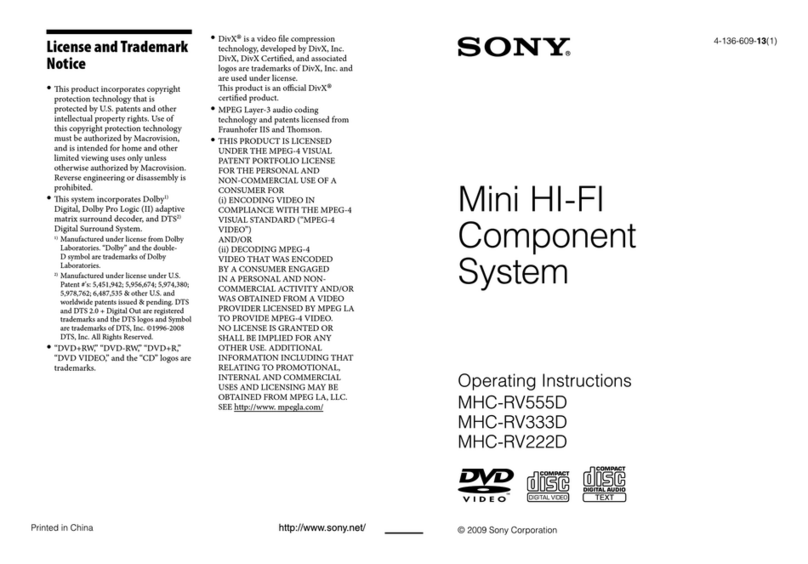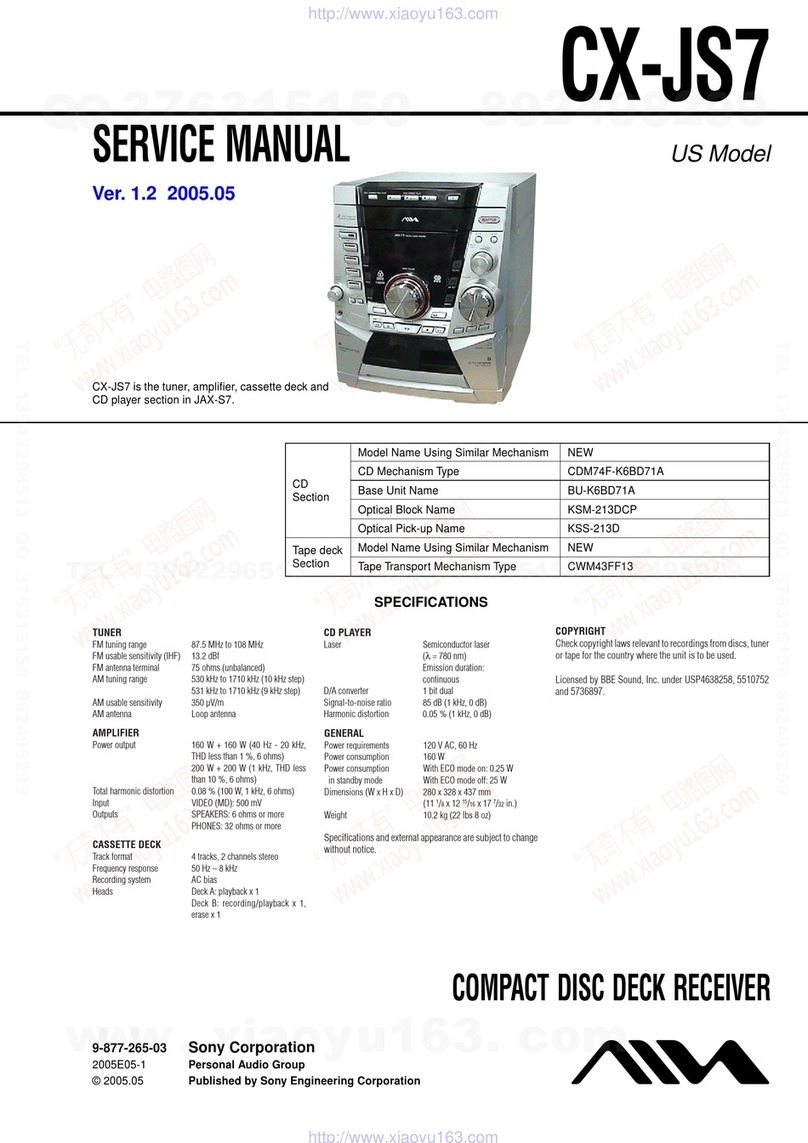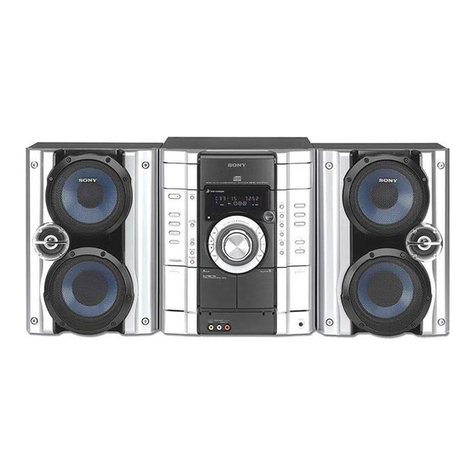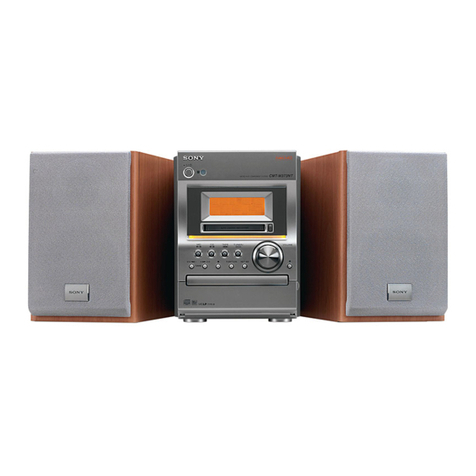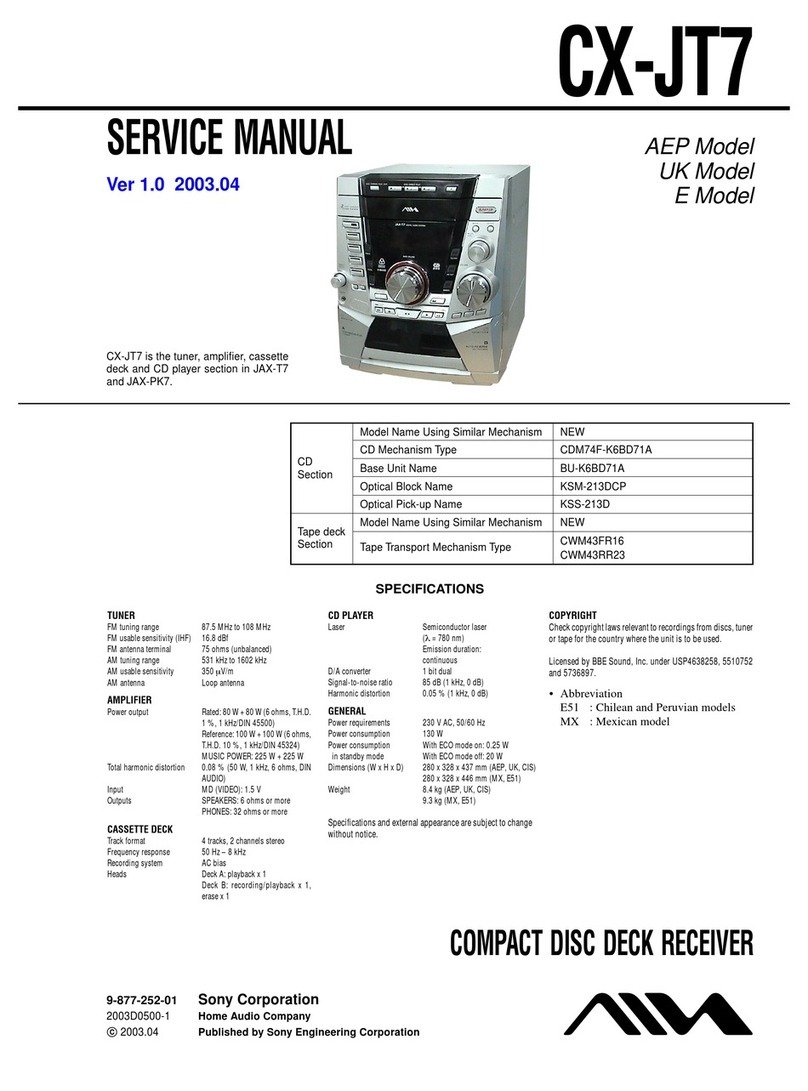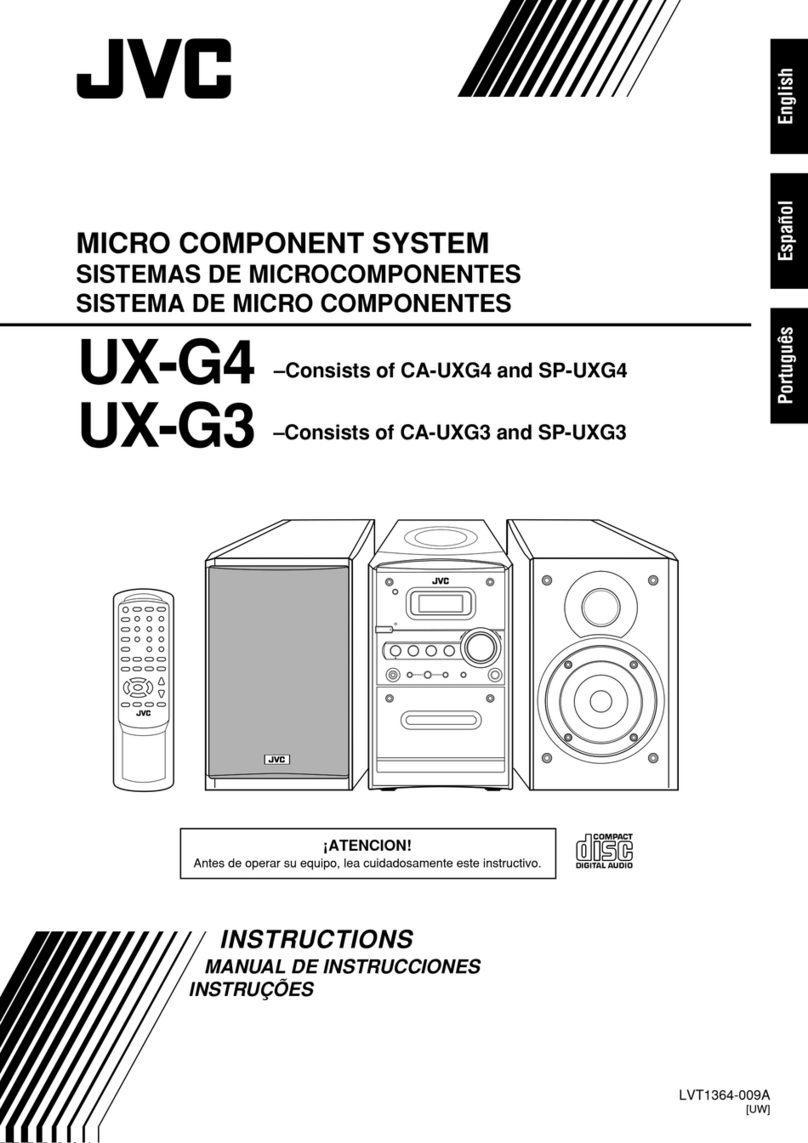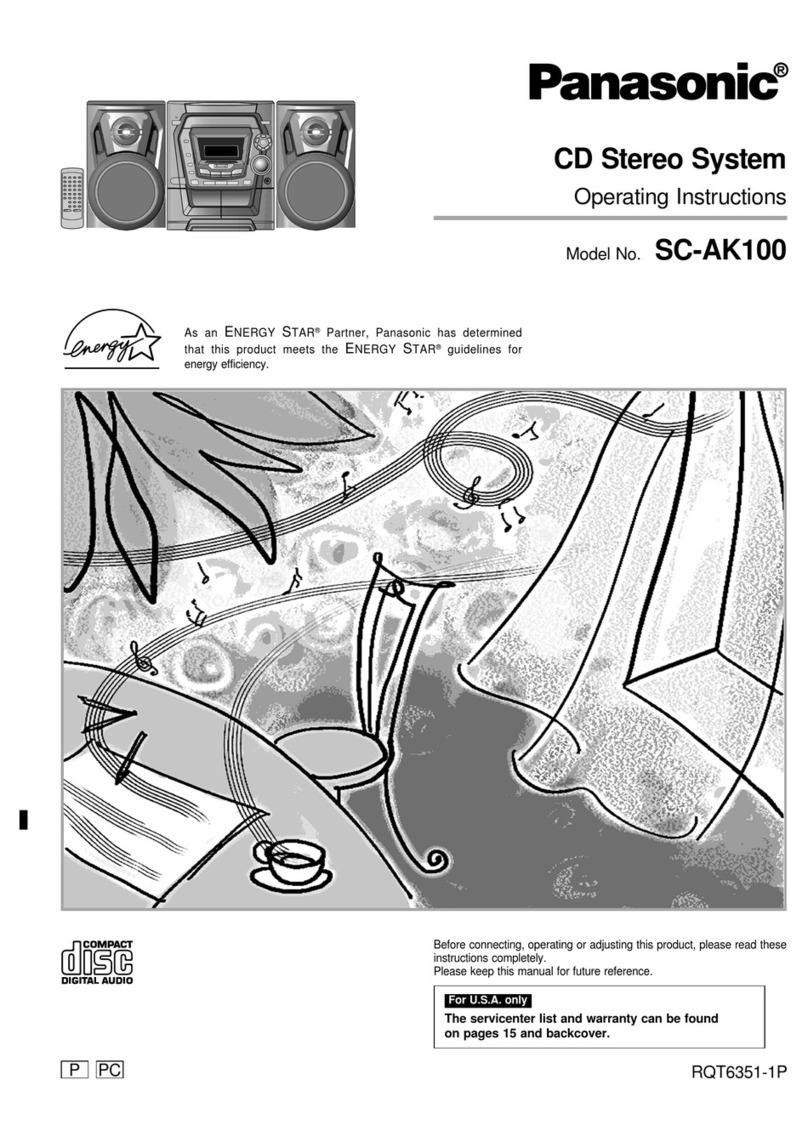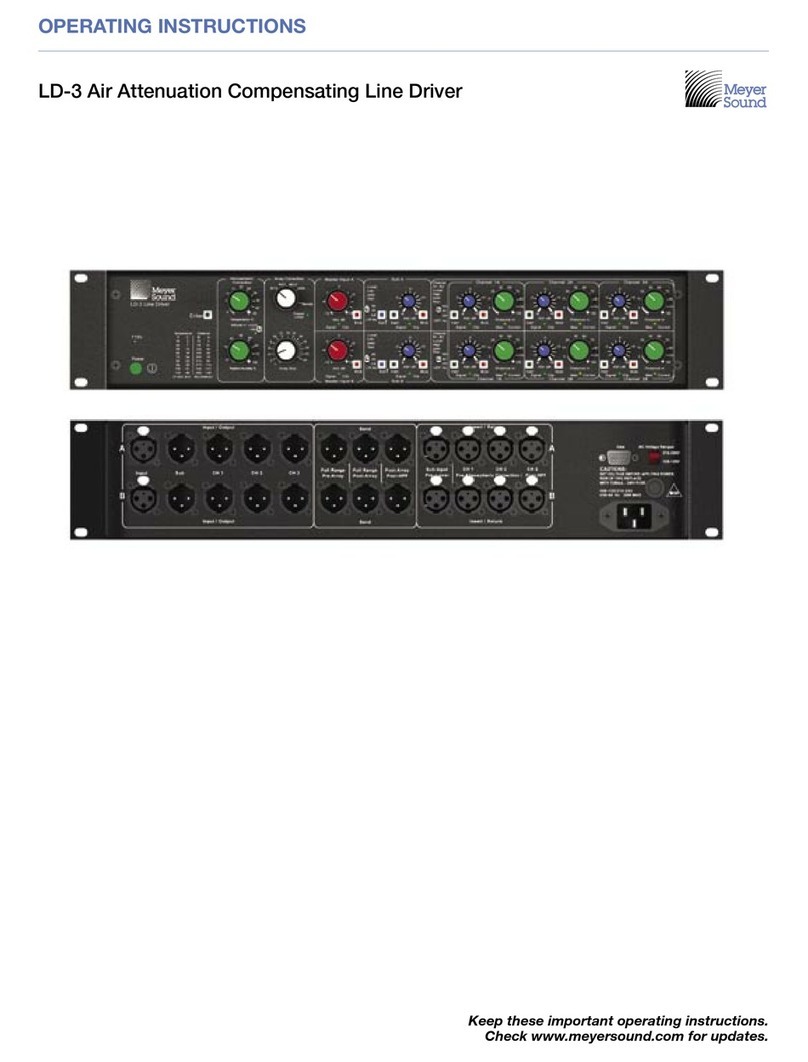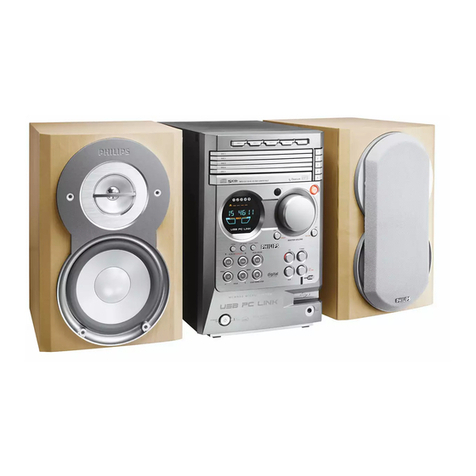
HCD-GPX5G/GPX7G/GPX8G
3
Ë1',&(
1. 127$6'(6(59,d2............................................... 4
2. D(60217$*(0
2-1. Sequencia de Desmontagem........................................... 8
2-2. Tampa................................................................................. 9
2-3. Painel de carregamento................................................... 9
2-4. Seção Painel Frontal ...................................................... 10
2-5. Seção Mecanismo CD (CDM741-DVBU201//M) ......... 10
2-6. Placa TUNER1AM3R .................................................... 11
2-7. Placa MAIN .................................................................... 11
2-8. Seção Painel Traseiro ..................................................... 12
2-9. Placa 4CH DAMP .......................................................... 13
2-10. Seção Chassi ................................................................... 14
2-11. Tampa Dust CDM ........................................................... 15
2-12. Unidade Otica .................................................................. 15
2-13. Placa DMB22 ................................................................. 16
2-14. Placa DRIVER, PlacaSWITCH ...................................... 16
2-15. Placa SENSOR ............................................................... 17
2-16. Placa MOTOR (TB)........................................................ 17
2-17. Placa MOTOR (LD) ...................................................... 18
3. 02'2'(7(67(.................................................... 19
4. VERIFICAÇÃO ELÉTRICA................................... 22
5. DIAGRAM$S
5-1. Diagrama em bloco - Seção CD/USB ............................. 23
5-2. Diagrama em bloco - Seção MAIN.................................. 24
5-3. Diagrama em bloco - Seção AMP ................................... 25
5-4. DiagramaHPEORFR - 6HomRPAINEL/Fonte de Alimentação 6
5-5. Placa de circuito Impresso -
Placa 4CH DAMP ( lado Componente) ......................... 28
5-6. Placa de circuito Impresso -
Placa 4CH DAMP (lado CREUHDGR)............................... 29
5-7. Diagrama Esquemático - Placa 4CH DA0P (1/3) -...... 30
5-8. Diagrama Esquemático - Placa 4CH DAMP (2/3) -....... 31
5-9. Diagrama Esquemático - Placa 4CH DAMP (3/3) -....... 32
5-10. Placa de circuito Impresso - Placa DISPLAY - .............. 33
5-11. Diagrama Esquemático - Placa DISPLAY -.................... 34
5-12. Placa de circuito Impresso -
Placa MAIN (Lado Componente) ................................... 35
5-13. Placa de circuito Impresso -
Placa MAIN (Lado CoEUHDGR) ........................................ 36
5-14. Diagrama Esquemático - Placa MAIN (1/4) -................. 37
5-15. Diagrama Esquemático - Placa MAIN (2/4) - ................ 38
5-16. Diagrama Esquemático - Plava MAIN (3/4) - ................ 39
5-17. Diagrama Esquemático - Placa MAIN (4/4) - ................ 40
5-18. Placa de circuito Impresso -
Placas USB, VOLUME eMIC - ...................................... 41
5-19. Diagramas Esquemáticos-
Placas USB, VOLUME eMIC - ...................................... 42
5-20. Placas de circuito Impresso - Placas DRIVER, SENSOR,
SWITCH, MOTOR (LD) eMOTOR (TB) ..................... 43
5-21. Diagramas Esquemáticos- Placas DRIVER, SENSOR,
SWITCH, MOTOR (LD) eMOTOR (TB) - .................... 44
5-22. Placa de circuito Impresso - Placa TUNER1AM3R ...... 45
5-23. Diagrama Esquemático - Placa TUNER1AM3R............ 45
5-24. Placa de circuito Impresso - Placa DMB22.................... 46
5-25. Diagrama Esquemático - Placa DMB22 (1/3) -.............. 47
5-26. Diagrama Esquemático - Placa DMB22 (2/3) -.............. 48
5-27. Diagrama Esquemático - Placa DMB22 (3/3) -.............. 49
6. VIS7$(;3/2','$
6-1. Seção Tampa ................................................................... 61
6-2. Seção Painel Frontal ...................................................... 62
6-3. Seção Painle Traseiro ..................................................... 63
6-4. Seção Chassi ................................................................... 64
6-5. Seção Mecanismo CD (1)
(CDM74I-DVBU201//M)............................................... 65
6-6. Seção Mecanismo CD (2)................................................ 66
7. LIST$'(3(d$6(/e75,&$6......................... 67
5-28. Diagrama Esquemático - Placa SMPS 3H384W -........... 5
5-. Diagrama Esquemático - Placa SMPS 3H385W -........... 55
&$,;$$&Ò67,&$666*3;*3;*3;*3;563. 7
D,$*5$0$6.............. 8
Diagrama Esquemático - ............. 9
3ODFDGHFLUFXLWRLPSUHVVR - Placa 63.5*%/('.......... 9
Diagrama Esquemático - Placa 63.5*%/('.............. 9
9,67$(;3/2','$66*3;*3;..............
9,67$(;3/2','$66*3;..............
9,67$(;3/2','$66*3;..............
9,67$(;3/2','$66563..............
/,67$'(3(d$6(/e75,&$6..............
D,$*5$0$666:*3:*3..............
9,67$(;3/2','$66:*3.............
9,67$(;3/2','$66:*3............
/,67$'(3(d$6(/e75,&$6
&$,;$6$&Ò67,&$6


